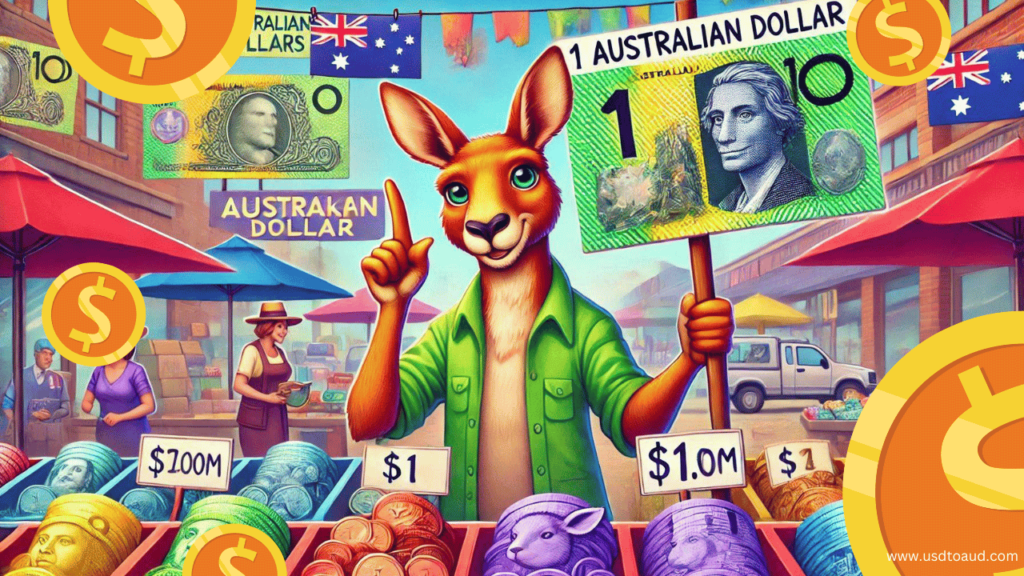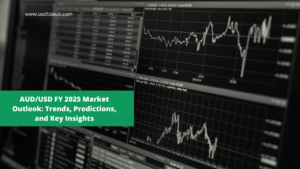Currency exchange rates are a crucial topic for travelers, businesses, and anyone dealing with international financial transactions.
If you’ve ever wondered how much $1 in Australian currency (AUD) is worth in American dollars (USD), this article provides a comprehensive exploration of the subject.
We’ll dive into exchange rate mechanisms, historical trends, factors influencing exchange rates, and practical tips for exchanging currencies, all supplemented by tables for clarity.
Currency Exchange Rates
What Is an Exchange Rate?
An exchange rate represents how much one currency is worth in terms of another. For example, if the exchange rate between AUD and USD is 0.65, this means 1 AUD = 0.65 USD.
Types of Exchange Rates
- Spot Rate: The current exchange rate at which a currency can be exchanged.
- Forward Rate: A negotiated rate for exchanging currencies at a future date.
- Interbank Rate: The rate banks use to trade currencies among themselves, often lower than consumer rates.
Current Exchange Rate: AUD to USD
Live Exchange Rate
Exchange rates fluctuate throughout the day based on market activity. Below is the average rate as of 2024:
| Currency Pair | Exchange Rate |
|---|---|
| 1 AUD to USD | 0.65 |
| 1 USD to AUD | 1.54 |
This means 1 Australian Dollar is worth 65 US cents, while 1 US Dollar equals 1.54 Australian Dollars.
Historical Trends of AUD to USD Exchange Rate
The value of AUD to USD has seen significant fluctuations over the years due to economic events, global markets, and domestic policies.
| Year | Average Exchange Rate (AUD to USD) |
|---|---|
| 2020 | 0.69 |
| 2021 | 0.73 |
| 2022 | 0.69 |
| 2023 | 0.67 |
| 2024 | 0.65 (Projected) |
Key Historical Moments
- 2011 Peak: AUD reached an all-time high of 1.10 USD due to strong commodity prices.
- 2020 Pandemic Low: AUD dropped to 0.57 USD as global uncertainty surged.
Factors Influencing AUD to USD Exchange Rates
Several factors determine the exchange rate between the Australian Dollar and the US Dollar:
1. Economic Performance
- Strong GDP growth, low unemployment, and high consumer confidence in Australia can increase the value of AUD.
2. Interest Rates
- Higher interest rates in Australia compared to the US attract foreign investors, boosting AUD value.
3. Commodity Prices
- Australia’s economy relies heavily on exports like iron ore and coal. Rising commodity prices generally strengthen AUD.
4. Global Events
- Geopolitical tensions, natural disasters, or global market trends can weaken or strengthen currencies.
5. US Dollar Strength
- As the world’s reserve currency, the strength of the USD often inversely impacts other currencies, including AUD.
Practical Examples of Conversions: AUD to USD
To help you understand the conversion process, here are examples of how AUD translates into USD for different amounts:
| AUD Amount | Converted to USD (Rate: 0.65) |
|---|---|
| 1 AUD | 0.65 USD |
| 10 AUD | 6.50 USD |
| 50 AUD | 32.50 USD |
| 100 AUD | 65.00 USD |
| 1000 AUD | 650.00 USD |
Conversely, converting USD to AUD at the same rate would look like this:
| USD Amount | Converted to AUD (Rate: 1.54) |
|---|---|
| 1 USD | 1.54 AUD |
| 10 USD | 15.40 AUD |
| 50 USD | 77.00 AUD |
| 100 USD | 154.00 AUD |
| 1000 USD | 1540.00 AUD |
Tips for Exchanging Currencies
For Travelers
- Monitor Exchange Rates: Use online tools or apps to find the best rates.
- Avoid Airport Exchanges: Rates are often less favorable, and fees can be higher.
- Use Credit Cards Wisely: Cards with no foreign transaction fees provide better exchange rates than cash exchanges.
For Businesses
- Lock in favorable rates using forward contracts if you frequently deal with international transactions.
Comparing Providers
| Provider | Exchange Rate Margin | Transaction Fees |
|---|---|---|
| Banks | Medium | Moderate |
| Currency Exchange Kiosks | High | High |
| Online Platforms | Low | Minimal |
Economic Implications of AUD to USD Exchange Rate
Impact on Trade
- A weaker AUD benefits Australian exporters, making goods cheaper for US buyers.
- A stronger AUD increases import costs for Australians buying US products.
Impact on Tourism
- A lower AUD value attracts more tourists to Australia as their dollars stretch further.
- Conversely, Australians traveling to the US face higher costs when AUD is weak.
Impact on Investment
- Australian equities may appear more attractive to US investors when the AUD is weaker.

Tools to Track Exchange Rates
To keep track of the latest AUD to USD rates, consider using:
- Currency Converter Apps: XE, OANDA
- Bank Portals: Most banks provide up-to-date rates.
- Forex Market News: Follow financial news platforms like Bloomberg or Reuters.
Conclusion
The exchange rate between Australian Dollars and US Dollars is dynamic, influenced by multiple economic and geopolitical factors. As of 2024, $1 AUD equals approximately $0.65 USD, making it essential to stay informed about rate changes whether you’re traveling, trading, or investing.
With the insights and tables provided, you’re now equipped to navigate currency conversions effectively and make informed financial decisions.
FAQs
1. What influences daily exchange rates?
Exchange rates are impacted by economic indicators, geopolitical events, and market sentiment.
2. Is it better to exchange money in Australia or the US?
Exchanging money in Australia often provides better rates due to lower margins.
3. Can I lock in a specific exchange rate?
Yes, forward contracts or travel cards with preloaded rates can lock in an exchange rate.
4. How do credit card rates compare to cash exchanges?
Credit card rates are usually more favorable, but foreign transaction fees may apply.

















